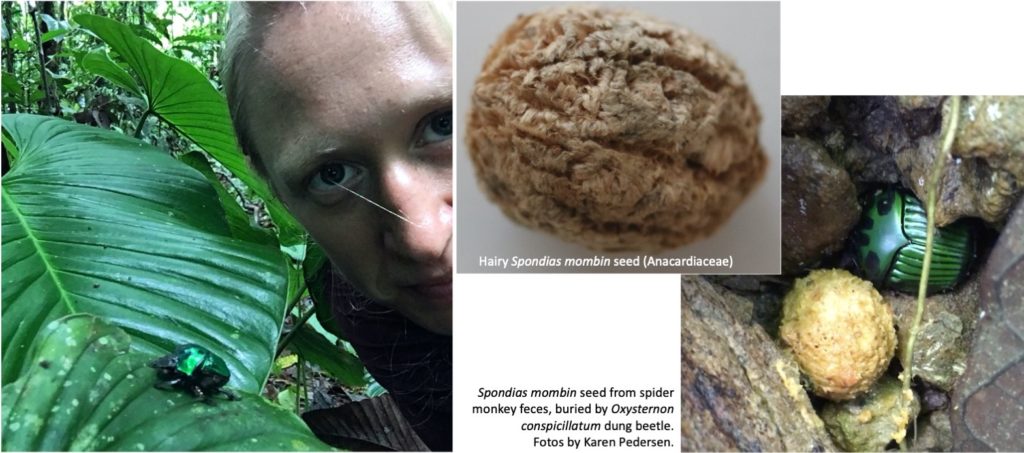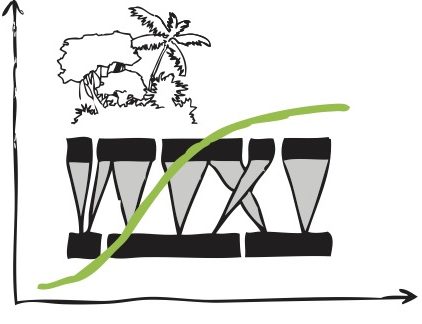Dung beetles are important secondary seed dispersers of mammal-dispersed plants in tropical forests – in our study site and worldwide. Beetles often bury the seeds that are included inside dung piles into the ground – if they are not too large in relation to the beetle. Beetles clean large seeds from dung rather than moving or burying them. But some large seeds such as Spondias (Anacardiaceae) are moved and buried, too – they are hairy, hold a thin layer of dung and are buried by beetles like a dung ball. A disadvantage for the beetle and his offspring who cannot feed on seeds.
Karen Pedersen discovered this new natural history phenomenon which suggests an important secondary dispersal syndrome. To test this idea, she measured seed traits (size, shape, pubescence) from over 30 plant species in fecal samples from brown-headed spider monkeys and mantled howler monkeys, dispersed or ignored by beetles. And she compiled literature traits from 427 Neotropical plant genera to investigate combination of traits. Her article now appeared in Biotropica:


